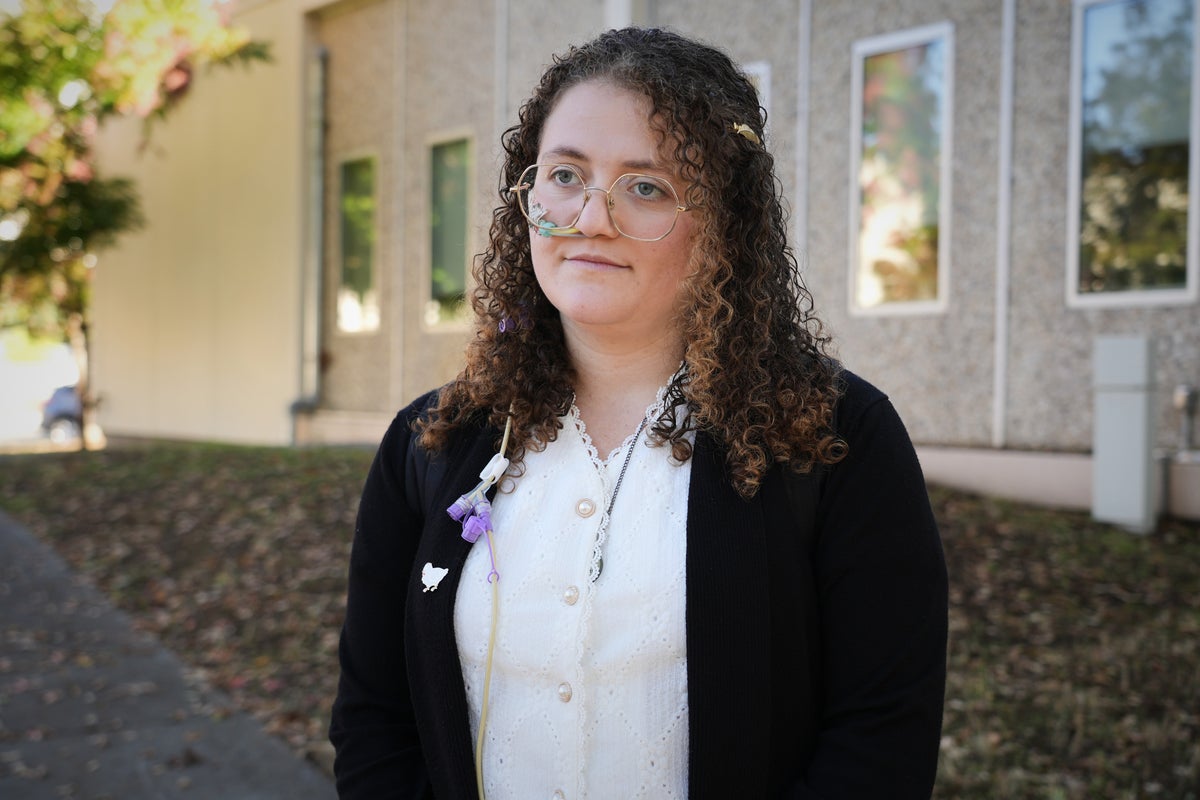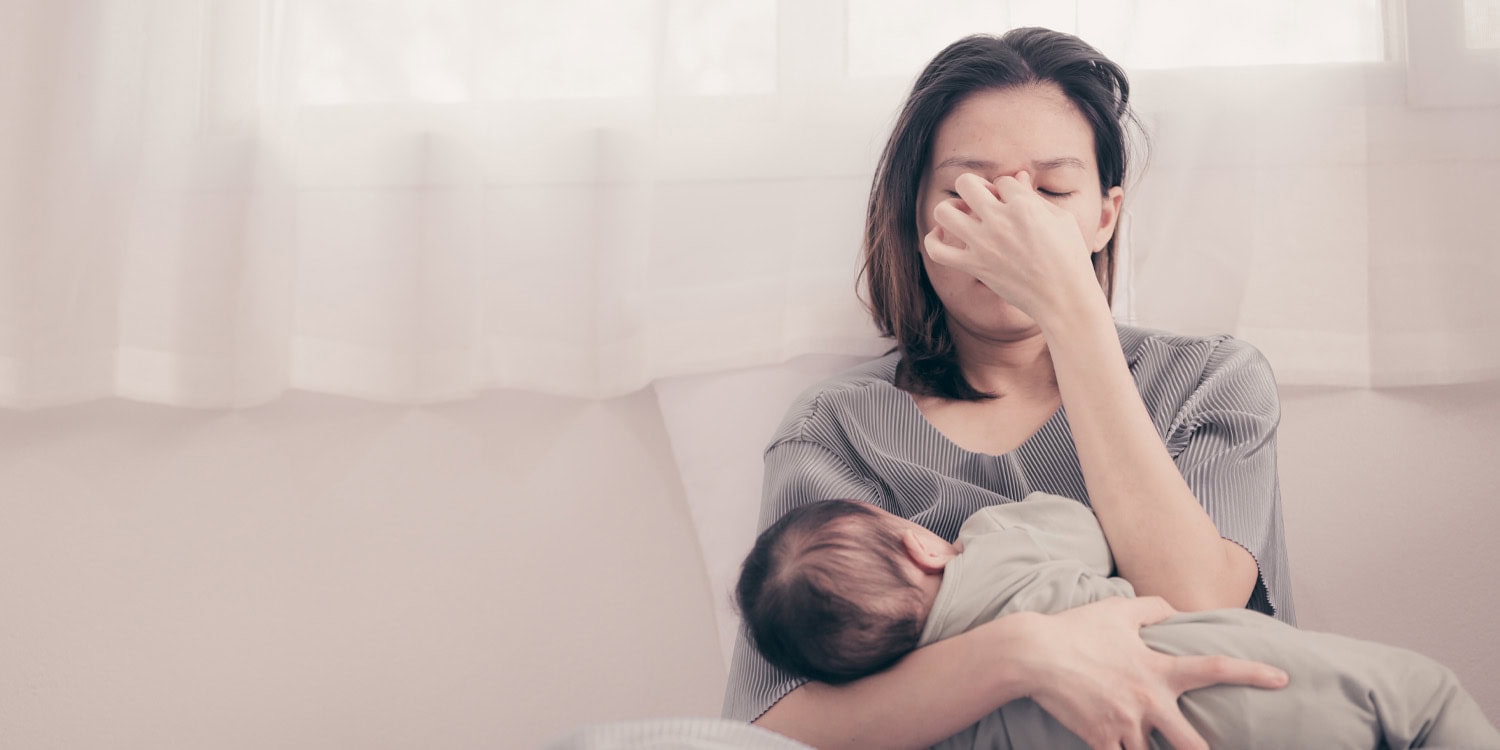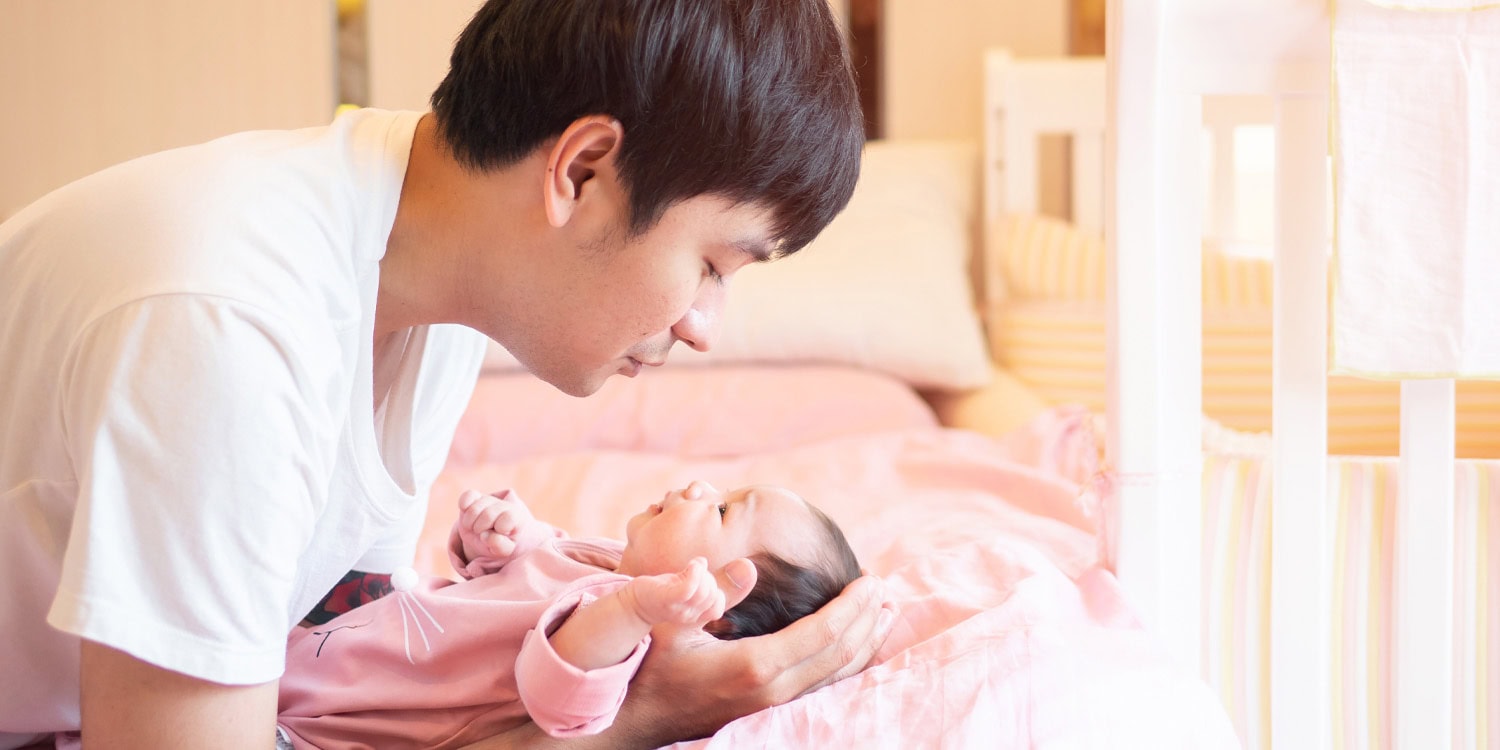Why An Eastern Pacific Tear In Earth’s Crust Could Spare The Pacific Northwest… Eventually




Streaming apps like TuneIn are redefining in-car listening, but Washington wants to keep a century of broadcast tradition alive.

© Tunein
After 27 wins and 141 top-fives, the team will shift gears to develop RAM’s Truck Series program before an eventual Xfinity return.
© Icon Sportswire
Top Fuel’s Doug Kalitta could clinch second title in three years if stars align at critical Las Vegas race.
© Icon Sportswire
Results show certain online brain exercises reduce dementia risk, researchers say

© Alamy/PA
Horse racing correspondent Jonathan Doidge brings us racing tips for day one of the Breeders’ Cup meeting at Del Mar

© Copyright 2023 The Associated Press. All rights reserved
A King Tut collection will be displayed in its entirety for the first time at the new museum

© AP
Solar panel efficiency determines how much sunlight your panels can turn into electricity and how much you’ll save on bills

© iStock/ Getty Images
Exclusive: Taylor Fritz and Ben Shelton add to calls for a greater share of grand slam revenues amid further proposals for wider reforms

© Getty Images for Laver Cup
Find out everything you need to know about the latest no-deposit free spins promo from Grosvenor Casino

© Independent
M25 in Surrey closed anti-clockwise

© X/@HighwaysSEAST
While businesses and markets welcomed the relief in trade tensions, analysts say it is not a structural reset but rather a tactical truce, even as root causes of the tensions remain, Shweta Sharma reports

© AP
The Briton enjoyed his first-ever win over a World No 1 in the previous round against Carlos Alcaraz but suffered defeat against the in-form Valentin Vacherot

© Getty Images

© appledesign - stock.adobe.com
Canelo has not been forthcoming since his loss to Terence Crawford, but in celebrating his 20th year as a professional fighter, he thought it was time to update the fans on his future in boxing

© Getty
The U.S. last conducted nuclear tests in 1992

© AP

© AFP via Getty Images
The surgeon-turned-author is a vaccine skeptic that has embraced the Health and Human Services Secretary’s ‘Make America Great Again’ agenda

© AP
The Reds boss claimed Man City and Chelsea have the luxury of squad depth, but Richard Jolly details why the champions’ predicament stems from a series of summer transfer decisions

© Getty Images
As many as 8,000 Britons are thought to be in Jamaica

© AFP/Getty

© PA Wire
A huge BBC star has publicly expressed an interest in replacing Strictly Come Dancing hosts Tess Daly and Claudia Winkleman.

© BBC
The new series is based on Mick Herron’s first book, published in 2003

© Apple TV+

© PA Archive

© PA Wire
They could be melted or broken down and ‘sold down the street’ in a shop

© AFP via Getty Images

© ASSOCIATED PRESS
There has been renewed focus on nuclear arsenals after Russia’s invasion of Ukraine, James C Reynolds and Maryam Zakir-Hussain report

© Russian Defense Ministry

© Copyright 2025 The Associated Press. All rights reserved.
Seeking style and comfort on a recent city break to Copenhagen, Ellie Harrison came to Hotel Sanders for its homely rooms but stayed for the cocktails at local hotspot bar Tata

© Hotel Sanders
Safi Dawood has been charged with murdering Wayne Broadhurst following a triple stabbing in Uxbridge

© PA Wire
As a landmark exhibition opens at the Tate Britain, Christopher Dorrell finds the real Hay Wain in the heart of Dedham Vale

© Getty Images/iStockphoto
Hadush Kebatu was given money after threatening to disrupt his deportation flight

© Essex Police

© Copyright 2025 The Associated Press. All rights reserved
Newsom blasted Trump for running the ‘biggest, most corrupt administration in history’ and tore into the president over his record in office

© ABC News
No-fault evictions should become a thing of the past

© Getty/iStock

© Copyright 2025 The Associated Press. All rights reserved.
Country artist said he was going as a ‘r*****’ for Halloween while holding a face mask over his mouth
-on-Jesse-Watters-Primetime.png?width=1200&auto=webp&crop=3%3A2)
© Fox News
Comedy seeks to mock British period pieces like the much-loved historical drama

© Bleeker Street
MAGA influencer Candace Owens has made a rare criticism of President Donald Trump’s administration, arguing the “full story” will never be revealed on Charlie Kirk’s death

© Getty
Drone footage captured how a Jamaican fishing village was reduced to rubble in damage caused by Hurricane Melissa.

© Reuters
These cordless, upright and stick vacuum cleaners have some serious bite

© Zoe Griffin/The Independent
Campaign group Republic said it had taken the ‘unprecedented step’ amid public outcry over Andrew’s ties to Epstein

© PA Wire

© AP2005

© PA Wire
Find the best free bets from top UK betting sites, including exclusive betting sign up offers in October 2025

© Getty/iStock

© PA Wire

© Safe Restraints

© PA Wire

© ASSOCIATED PRESS
Frankincense and myrrh won’t get a look in

© Daisy Lester/The Independent
The BBC’s deal with the US streaming service is over, and other than a promised Christmas episode next year, the future of the sci-fi series is shrouded in uncertainty. But ‘Doctor Who’ is indicative of a broader quandary at the BBC, writes Fiona Sturges

© BBC Studios/Bad Wolf/James Pardon
Brooklyn Beckham's shortcut in his beef wellington recipe has prompted a mixed reaction from fans.

© Brooklyn Beckham
Fans of the hit TV show will be able to take on real-life versions of favourite challenges

© Graeme Hunter

© PA Media
Italian envoy says Lai has been in prison since 2020 for ‘peacefully exercising his right to freedom of expression’

© Getty
Rapid-response units to be trained up in use of batons and body shields to quell civil disturbances in U.S. cities, according to interal memo

© AP

© Peter Byrne/PA Wire
Khan has urged Pacquiao to ignore a rematch with Mayweather to fight him instead

© Getty

© Copyright 2025 The Associated Press. All rights reserved
‘States of Play’ is one of seven books on a ‘heavyweight shortlist’ for the prestigious award, with the winner announced on 25 November

© Miguel Delaney
Danny Dyer has teased a potential appearance on the Celebrity Traitors under one condition.

© Jordan Pettitt/PA Wire

© Copyright 2025 The Associated Press. All rights reserved
From kitchen appliances to skincare, we’ve rounded up what you can expect in this year’s Amazon sale

© The Independent
Exclusive: Florida man Tristen Elijah Giroux allegedly became enraged after becoming stuck in a phone tree while calling U.S. Citizenship and Immigration Services, according to previously unreported court filings
.jpeg?width=1200&auto=webp&crop=3%3A2)
© Getty Images

© Copyright 2025 The Associated Press. All rights reserved.

Your go-to for tried and tested reviews and shopping advice from The Independent

© The Independent
The formula is a favourite for good reason

© Elemis/The Independent

© ASSOCIATED PRESS
Hooker and Tsarukyan will square off in a crucial lightweight clash on 22 November

© Getty Images

© The Associated Press
Satellite imagery in Jamaica shows the extent of flooding left behind after Hurricane Melissa roared ashore.

© Vantor, Government of Jamaica
We’ve rounded up the best mobile deals and instructions for how to switch

© iStock
Group says they will be filing an appeal, claiming the ‘relationship of trust with Ador has been completely destroyed’

© Getty Images


© StackCommerce
The human fascination with fear is a long-standing puzzle. From ghost stories told around a campfire to the latest blockbuster horror film, many people actively seek out experiences designed to frighten them. This seemingly contradictory impulse, where negative feelings like terror and anxiety produce a sense of enjoyment and thrill, has intrigued psychologists for decades. Researchers are now using a variety of tools, from brain scans to personality surveys, to understand this complex relationship.
Their work is revealing how our brains process fear, what personality traits draw us to the dark side of entertainment, and even how these experiences might offer surprising psychological benefits. Here is a look at twelve recent studies that explore the multifaceted psychology of horror, fear, and the paranormal.
(You can click on the subtitles to learn more about the studies.)
A new theory proposes that horror films appeal to us because they provide a safe, controlled setting for our brains to practice managing uncertainty. This idea is based on a framework known as predictive processing, which suggests the brain operates like a prediction engine. It constantly makes forecasts about what will happen next, and when reality doesn’t match its predictions, it generates a “prediction error” that it works to resolve.
This process doesn’t mean we only seek out calm, predictable situations. Instead, our brains are wired to find ideal opportunities for learning, which often exist at the edge of our understanding. We are drawn toward a “Goldlilocks zone” of manageable uncertainty that is neither too simple nor too chaotic. The rewarding feeling comes not just from being correct, but from the rate at which we reduce our uncertainty.
Horror films appear to be engineered to place us directly in this zone. They manipulate our predictive minds with a mix of the familiar and the unexpected. Suspenseful music and classic horror tropes build our anticipation, while jump scares suddenly violate our predictions. By engaging with this controlled chaos, we get to experience and resolve prediction errors in a low-stakes environment, which the brain can find inherently gratifying.
Research from an evolutionary perspective suggests that our enjoyment of horror serves a practical purpose: it prepares us for real-world dangers. This “threat-simulation hypothesis” posits that engaging with scary media is an adaptive trait, allowing us to explore threatening scenarios and rehearse our responses from a position of safety. Through horror, we can learn about predators, hostile social encounters, and other dangers without facing any actual risk.
A survey of over 1,100 adults found that a majority of people consume horror media and more than half enjoy it. The study revealed that people who enjoy horror expect to experience a range of positive emotions like joy and surprise alongside fear. This supports the idea that the negative emotion of fear is balanced by positive feelings, a phenomenon some call “benign masochism.”
The findings also showed that sensation-seeking was a strong predictor of horror enjoyment, as was a personality trait related to intellect and imagination. It seems those who seek imaginative stimulation are particularly drawn to horror. By providing a vast space for emotional and cognitive play, frightening entertainment allows us to build and display mastery over situations that would be terrifying in real life.
To better understand what makes a horror movie entertaining, researchers surveyed nearly 600 people about their reactions to short scenes from various horror subgenres. The study found that three key factors predicted both excitement and enjoyment: the intensity of fear the viewer felt, their curiosity about morbid topics, and how realistic they perceived the scenes to be.
The experience of fear itself was powerfully linked to both excitement and enjoyment, showing that the thrill of being scared is a central part of the appeal. Morbid curiosity also played a significant role, indicating that people with a natural interest in dark subjects are more likely to find horror entertaining. The perceived realism of a scene heightened the experience as well.
However, not all negative emotions contributed to the fun. Scenes that provoked high levels of disgust tended to decrease enjoyment, even if they were still exciting. This finding suggests that while fear can be a source of pleasure for horror fans, disgust often introduces an element that makes the experience less enjoyable overall.
Fear is not just for adults. A large-scale survey of 1,600 Danish parents has revealed that “recreational fear,” or the experience of activities that are both scary and fun, is a nearly universal part of childhood. An overwhelming 93% of children between the ages of 1 and 17 were reported to enjoy at least one type of scary yet fun activity, with 70% engaging in one weekly.
The study identified clear developmental trends in how children experience recreational fear. Younger children often find it in physical and imaginative play, such as being playfully chased or engaging in rough-and-tumble games. As they grow into adolescence, their interest shifts toward media-based experiences like scary movies, video games, and frightening online content. One constant across all ages was the enjoyment of activities involving high speeds, heights, or depths, like swings and amusement park rides.
These experiences are predominantly social. Young children typically engage with parents or siblings, while adolescents turn to friends. This social context may provide a sense of security that allows children to explore fear safely. The researchers propose that this type of play is beneficial, helping children learn to regulate their emotions, test their limits, and build psychological resilience.
A study involving 300 college students suggests that your favorite movie genre might offer clues about your personality. Using the well-established Big Five personality model, researchers found consistent links between film preferences and traits like extraversion, conscientiousness, and neuroticism.
Fans of horror films tended to score higher in extraversion, agreeableness, and conscientiousness, suggesting they may be outgoing, cooperative, and organized. They also scored lower in neuroticism and openness, which could indicate they are less emotionally reactive and less drawn to abstract ideas. In contrast, those who favored drama scored higher in conscientiousness and neuroticism, while adventure film fans were more extraverted and spontaneous.
While these findings point to a relationship between personality and media choice, the study has limitations. The sample was limited to a specific age group and cultural background, so the results may not apply to everyone. The research also cannot determine whether personality shapes film choice or if the films we watch might influence our personality over time.
Morbid curiosity, a trait defined by an interest in dangerous phenomena, may help explain why some people are drawn to music with violent themes, like death metal or certain subgenres of rap. A recent study found that people with higher levels of morbid curiosity were more likely to listen to and enjoy music with violent lyrics.
In an initial survey, researchers found that fans of music with violent themes scored higher on a scale of morbid curiosity than fans of other genres. A second experiment involved having participants listen to musical excerpts. The results showed that morbid curiosity predicted enjoyment of extreme metal with violent lyrics, but not rap music with violent lyrics, suggesting different factors may be at play for different genres.
The study authors propose that morbid curiosity is not a deviant trait, but an adaptive one that helps people learn about threatening aspects of life in a safe, simulated context. Music with violent themes can act as one of these simulations, allowing listeners to explore dangerous ideas and the emotions they evoke without any real-world consequences.
People who enjoy horror movies may have been better equipped to handle the psychological stress of the COVID-19 pandemic. A study conducted in April 2020 surveyed 322 U.S. adults about their genre preferences, morbid curiosity, and psychological state during the early days of the pandemic.
The researchers found that fans of horror movies reported less psychological distress than non-fans. They were less likely to agree with statements about feeling more depressed or having trouble sleeping since the pandemic began. Fans of “prepper” genres, such as zombie and apocalyptic films, also reported less distress and said they felt more prepared for the pandemic.
The study’s authors speculate that horror fans may have developed better emotion-regulation skills by repeatedly exposing themselves to frightening fiction in a controlled way. This “practice” with fear in a safe setting could have translated into greater resilience when faced with a real-world crisis.
Engaging with frightening entertainment might temporarily alter brain network patterns associated with depression. A study found that in individuals with mild-to-moderate depression, a controlled scary experience was linked to a brief reduction in the over-connectivity between two key brain networks: the default mode network (active during self-focused thought) and the salience network (which detects important events).
This over-connectivity is thought to contribute to rumination, a cycle of negative thoughts common in depression. By demanding a person’s full attention, the scary experience appeared to pull focus away from this internal loop and onto the external threat. The greater this reduction in connectivity, the more enjoyment participants reported.
The study also found that individuals with moderate depression needed a more intense scare to reach their peak enjoyment compared to those with minimal symptoms. While the observed brain changes were temporary, the findings raise questions about the interplay between fear, pleasure, and emotion regulation.
A recent study has found a connection between the type of horror media people watch and their beliefs in the paranormal. After surveying over 600 Belgian adults, researchers discovered that consumption of horror content claiming to be based on “true events” or presented as reality was associated with stronger paranormal beliefs.
Specifically, people who frequently watched paranormal reality TV shows and horror films marketed as being based on a true story were more likely to endorse beliefs in things like ghosts, spiritualism, and psychic powers. Other fictional horror genres, such as monster movies or psychological thrillers, did not show a similar connection.
This finding aligns with media effect theories suggesting that when content is perceived as more realistic or credible, it can have a stronger impact on a viewer’s attitudes. However, the study’s design means it is also possible that people who already believe in the paranormal are simply more drawn to this type of content.
Individuals who strongly believe in paranormal phenomena may exhibit different brain activity and cognitive patterns compared to skeptics. A study using electroencephalography (EEG) to record the brain’s electrical activity found that paranormal believers had reduced power in certain brainwave frequencies, specifically in the alpha, beta, and gamma bands, particularly in the frontal, parietal, and occipital regions of the brain.
Participants also completed a cognitive task designed to measure inhibitory control, which is the ability to suppress impulsive actions. Paranormal believers made more errors on this task than skeptics, suggesting reduced inhibitory control. They also reported experiencing more everyday cognitive failures, such as memory slips and attention lapses.
The researchers found that activity in one specific frequency band, beta2 in the frontal lobe, appeared to mediate the relationship between paranormal beliefs and inhibitory control. This suggests that differences in brain function, particularly in regions involved in high-level cognitive processes, may be connected to a person’s conviction in the paranormal.
Unusual events like premonitions, vivid dreams, and out-of-body sensations are surprisingly common, and people who report them often share certain psychological traits. A series of three studies involving over 2,200 adults found a strong link between anomalous experiences and a trait called “subconscious connectedness,” which describes the degree to which a person’s conscious and subconscious minds influence each other.
People who scored high in subconscious connectedness reported having anomalous experiences far more frequently than those with low scores. In one national survey, 86% of participants said they had at least one type of anomalous experience more than once. The most commonly reported was déjà vu, followed by correctly sensing they were being stared at and having premonitions that came true.
These experiences were also associated with other traits, including absorption, dissociation, vivid imagination, and a tendency to trust intuition. While people who reported more anomalous experiences also tended to report more stress and anxiety, these associations were modest, suggesting such experiences are a normal part of human psychology for many.
The eerie sensation that someone is nearby when you are alone may be a product of your brain trying to make sense of uncertainty. A study found that this “feeling of presence” is more likely to occur when people are in darkness with their senses dulled. Under these conditions, the brain may rely more on internal cues and expectations, sometimes generating the impression of an unseen agent.
In an experiment, university students sat alone in a darkened room for 30 minutes while wearing a sleeping mask and earplugs. The results showed that participants who reported higher levels of internal uncertainty were more likely to feel that another person was with them. This suggests that when sensory information is limited, the brain may interpret ambiguous bodily sensations or anxious feelings as evidence of an outside presence.
This cognitive process might be an evolutionary holdover. From a survival standpoint, it is safer to mistakenly assume a predator is hiding in the dark than to ignore a real one. This bias toward detecting agents could help explain why ghostly encounters and beliefs in invisible beings are so common across human cultures, especially in situations of isolation and vulnerability.

A new study reports that a diet rich in omega-3 fatty acids during pregnancy can prevent some of the lasting neuropsychiatric effects of prenatal THC exposure in rats. The findings, published in Molecular Psychiatry, suggest these protective effects are much more pronounced in male offspring, highlighting a significant sex-based difference in the outcomes.
The rationale behind the investigation stems from the increasing use of cannabis during pregnancy, coupled with a public perception that it is relatively safe. Scientific evidence, however, suggests that prenatal exposure to THC, the main psychoactive component in cannabis, can pose risks to a developing fetus. THC can cross the placenta and directly affect the fetal brain, interfering with the endocannabinoid system, a complex network of signals that helps guide proper brain formation.
This natural signaling system is built from fatty acids, which are lipids. The authors behind the new study hypothesized that since THC disrupts this lipid-based system, a dietary intervention focused on beneficial lipids like omega-3 fatty acids might offer a protective effect. Omega-3s are known to be fundamental for building healthy brain cells and circuits, making them a logical candidate for counteracting some of THC’s disruptive influence.
“Cannabis use during pregnancy is rising and there are misperceptions about its safety for the developing fetal brain. There is also a big knowledge gap about how prenatal cannabis use can impact critical brain developmental systems like the omega-3 fatty acid pathway, which is critical for healthy brain development and mental health outcomes,” said study author Steven R. Laviolette, a professor and director of the Addiction Research Group at the University of Western Ontario.
To explore this, the research team used a rat model. Pregnant rats were divided into four groups. Two groups received a standard control diet, and two received a diet enriched with omega-3 fatty acids. Within each dietary group, half of the dams were given daily injections of THC during gestation, while the other half received a harmless vehicle injection. This created four experimental conditions for the offspring: a control group, a group exposed only to omega-3s, a group exposed only to THC, and a group exposed to both THC and the omega-3 diet.
The researchers then followed the offspring into adulthood, conducting a comprehensive series of tests to assess their behavior, brain function, and brain chemistry. The first observation was related to birth weight. Offspring exposed to THC had significantly lower birth weights, but this effect was prevented in the pups whose mothers were on the omega-3 diet.
Behavioral testing in adulthood revealed clear, sex-specific outcomes. Males exposed to THC showed heightened anxiety-like behaviors in various tests. This anxiety was absent in the THC-exposed males that also received the omega-3 diet, suggesting the diet had a preventative effect. Females did not show the same anxiety-like behaviors from THC exposure.
The researchers also examined cognitive function through tests of social interaction, spatial working memory, and the ability to recognize objects in a specific order. In these tasks, prenatal THC exposure led to deficits in both male and female offspring. The omega-3 diet successfully prevented these cognitive problems in males. For females, the benefits were limited; the diet helped restore social motivation but did not improve their performance on the other memory tasks.
“We were surprised by 1) how severe the THC-induced abnormalities in omega-3-6 levels were in the brain and 2) how males and female offspring were differentially impacted by these effects, demonstrating that male vs. female offspring show differential sensitivity to maternal cannabis exposure,” Laviolette told PsyPost.
To understand the brain activity behind these behaviors, the team recorded electrical signals from neurons in three interconnected brain regions: the prefrontal cortex, the nucleus accumbens, and the hippocampus. They found that THC altered the normal firing patterns of brain cells differently in males and females. In the prefrontal cortex, THC caused hyperactivity in both sexes. The omega-3 diet restored normal activity in males but was less effective in females.
In the hippocampus, a region important for memory and mood, THC had opposite effects on activity in the two sexes. It made neurons in males underactive, while making neurons in females overactive. The omega-3 diet successfully corrected this imbalance in both sexes, returning neuronal activity to normal levels. The communication patterns between brain regions, which rely on coordinated rhythmic electrical waves, were also disrupted by THC. Again, the omega-3 diet helped normalize these communication rhythms more effectively in males than in females.
The deepest level of analysis looked at the molecular makeup of the brain, focusing on the lipids and proteins that are the building blocks of brain function. The results here were particularly revealing. THC exposure caused widespread disruptions in the balance of fatty acids and other lipid molecules in all three brain regions studied.
Even in the males whose behavior and brain activity appeared to be normalized by the omega-3 diet, these fundamental lipid imbalances persisted into adulthood. This suggests that while the dietary intervention could prevent outward symptoms, it did not completely fix the underlying chemical disruption caused by THC.
“While our dietary intervention prevented some of the negative impacts of fetal cannabis exposure, it did not fully restore normal fatty acid levels in the brain,” Laviolette said. “Thus, further research is needed to determine the precise balance of omega-3 (e.g. DHA vs. EPA) in order to block these negative outcomes.”
“Our findings are not to suggest that adding omega-3 supplements during pregnancy can prevent the negative effects of maternal cannabis exposure. Cannabis use during pregnancy is always dangerous and can have unintended negative effects on the developing child’s brain.”
Similarly, THC altered the levels of important proteins involved in brain cell communication and structure. The omega-3 diet helped correct many of these protein changes in males, but the effects were far less consistent in females. The findings collectively point to a scenario where the omega-3 diet provides a substantial buffering effect against THC-induced damage in the male brain, but the female brain seems to respond very differently to both the initial THC exposure and the dietary intervention.
“The major finding is that we found that exposure to THC during fetal brain development can strongly disrupt the normal balance between the omega-3 and omega-6 fatty acid pathways in the developing brain,” Laviolette explained. “These pathways need to be balanced in order to control processes like inflammation and oxidative stress, which are linked to increased risk for many cognitive and psychiatric problems in children.”
“We found that if we intervened with a high omega-3 dietary intervention during pregnancy, we were able to prevent many of the negative outcomes from maternal cannabis use. Importantly, this is not to suggest that taking omega-3 along with cannabis is a safer option, rather, it demonstrates that cannabis can strongly interfere with the developing brains normal balance of the omega-3-6 signaling pathways and that it would be necessary to restore healthy omega-3 fatty acid levels to block some of these dangerous side-effects of maternal cannabis use.”
“We also found that maternal cannabis use impacts three major brain areas, the hippocampus, prefrontal cortex and striatum, all of which had disruptions in normal fatty acid signaling levels and male and female offspring showed cognitive deficits in later life that were associated with pathology in these brain areas,” Laviolette said.
The study has some limitations. The research was conducted in rats, and while these models are informative for understanding basic neurobiology, the findings do not automatically translate to humans. The specific mechanisms, such as the diet’s effect on inflammation in the placenta, were not directly measured and require more investigation.
Looking ahead, researchers plan to further explore the biological reasons for the profound differences between male and female responses. They also hope to investigate whether providing omega-3 supplementation later in life, such as during childhood or adolescence, could help reverse or prevent problems that emerge long after birth.
The study, “Perinatal omega-3 sex-selectively mitigates neuropsychiatric impacts of prenatal THC in the cortico-striatal-hippocampal circuit,” was authored by Mohammed H. Sarikahya, Samantha L. Cousineau, Marta De Felice, Hanna J. Szkudlarek, Kendrick Lee, Aleksandra Doktor, Amanda Alcaide, Marieka V. DeVuono, Anubha Dembla, Karen Wong, Mathanke Balarajah, Sebastian Vanin, Miray Youssef, Kuralay Zhaksylyk, Madeline Machado, Haseeb Mahmood, Susanne Schmid, Ken K.-C. Yeung, Daniel B. Hardy, Walter Rushlow & Steven R. Laviolette.

 A real can of worms.
A real can of worms.
The chancellor is facing the prospect of increasing taxes on 26 November as she looks to balance the books

© PA

© Copyright 2025 The Associated Press. All rights reserved.
Designed for athletes, they pair with Garmin and Strava so you can hear real-time stats in your ears

© The Independent
Seven months on from Jordan’s sad passing at the age of 76, Formula One correspondent Kieran Jackson speaks to his wife Marie about the late-great F1 team owner and pundit – and his core principles, which form the basis of a new book

© Getty
The chocolatier has added cold drinking chocolate to its repertoire

© iStock/Mollie Davies/The Independent
The study involved data from 162,000 men from eight European countries over a 23-year period

The result instead seems to open a path for D66 leader Rob Jetten to form a government

© Reuters
Megan Walerius was engaged to single father Jordan Keltner on the show

© Netflix

© PA Media
For perfect matcha lattes at home, look no further than this wonder gadget

© Emilie Lavinia/The Independent
One of the pair had been trying to fly out of France when detained

© AP
Richard Branson’s firm may expand to Germany and Switzerland, in addition to Paris, Brussels and Amsterdam

© Virgin Trains
Virgin Media O2 announces UK-first mobile partnership with Elon Musk’s Starlink to improve connectivity in signal blackspots

© Getty Images

© AP

© Alamy/PA

© PA Archive
The Independent’s agony aunt Victoria Richards is here to help. Email dearvix@independent.co.uk for advice on love, work, family and relationships

© Sony Pictures

© Copyright 2023 The Associated Press. All rights reserved
Fleetwood Mac duo say they shared a phone call to discuss their past

© Getty
‘It was damning,’ viewers say of presenter’s reactions during the round table

© BBC
Rookie pitcher Yesavage confounded the Dodgers to move Toronto within a game of World Series glory at 3-2, with the series set to return to Canada for game six

© IMAGN IMAGES via Reuters Connect

© PA Wire
The company has already laid off 500 people this year

© Copyright 2025 The Associated Press. All rights reserved.
Editorial: As crisis after crisis piles up for new home secretary Shabana Mahmood, she must have the full backing of her PM and chancellor to do whatever it takes to restore public confidence in the system

© PA Wire
Katherine Rees says family ‘shocked and saddened’ that ship left Lizard Island ‘without my mum, Suzanne’

© AFP via Getty

© PA Archive

© Copyright 2025 The Associated Press. All rights reserved
Actor briefly played a younger version of Will Smith’s protagonist in hit sitcom

© Floyd Roger Myers Jr Instagram

© Copyright 2025 The Associated Press. All rights reserved
Rob Jetten has turned D66’s fortunes around and is poised to form a new Dutch government

© AP
The energy firm attributed the improved performance to higher sales volumes and enhanced trading margins

© PA Wire
Henry Cavill was the best thing about the show, and in this penultimate season, it struggles on without him

© Netflix

© Copyright 2025 The Associated Press. All rights reserved
Ukrainian authorities allege man was preparing to carry out terrorist attacks

© Telegram: Office of the Ukraine Attorney General

© Alamy/PA

© Alamy/PA

© ASSOCIATED PRESS

© Getty Images/iStockphoto

© Alex Wong/Getty Images
 Risks that might spill beyond our control.
Risks that might spill beyond our control.

© ASSOCIATED PRESS
The Oscar-winning ‘Eternal Sunshine of the Spotless Mind’ screenwriter has collaborated with poet Eva HD on a short film following ghosts through the streets of Athens. The pair talk to Kevin E G Perry about mortality, the decline of Hollywood and grieving ‘Synecdoche, New York’ star Philip Seymour Hoffman

© How to Shoot a Ghost
The teenager collapsed almost immediately after impact

© X/@cricketvictoria
Irish actor says it was ‘one of the worst days’ ever he’s had on a film set

© Getty Images

© Copyright 2025 The Associated Press. All rights reserved.
Hurricane Melissa is now passing through the Bahamas and is expected to hit Bermuda late Thursday evening

© AFP via Getty Images
Allen directly mentions the brownstone in her new record

© Getty Images

© Copyright 2025 The Associated Press. All rights reserved
News of Moscow’s latest test comes days after Trump warned the US has a nuclear submarine off Russian shores

© Getty

© Copyright 2025 The Associated Press. All rights reserved
The U.S. has followed a ‘voluntary moratorium’ on nuclear weapons testing since 1992

© AP

© Copyright 2025 The Associated Press. All rights reserved.
The ‘storm of a century’ has torn through the Caribbean, with dozens of people killed

© AFP via Getty Images
Lt. Gen. Joe McGee reportedly left his role earlier this month

© Joint Chiefs of Staff
Vance was speaking at a Turning Point USA event and taking questions from students in a similar way to the conservative organization’s late founder, Charlie Kirk.

© Jonathan Ernst/Pool/AFP via Getty Images
MPs on spending watchdog the Public Accounts Committee ask questions of Crown Estate and Treasury

© AFP/Getty

© ASSOCIATED PRESS

© Copyright 2016 The Associated Press. All rights reserved

© Copyright 2025 The Associated Press. All rights reserved

© Copyright 2023 The Associated Press. All rights reserved

© Copyright 2025 The Associated Press. All rights reserved

© Copyright 2025 The Associated Press. All rights reserved

© ASSOCIATED PRESS
 From spooky reputations to science.
From spooky reputations to science.
 It's a masterpiece.
It's a masterpiece.
 A superbug killer 100x more potent than methylenomycin A.
A superbug killer 100x more potent than methylenomycin A.
Sporty coupes and sports cars from Toyota? Yes!

© Toyota
High-stakes sit-down follows months of tensions and tariff threats over China’s rare earth export controls
.jpg?width=1200&auto=webp&crop=3%3A2)
© REUTERS
In total, more than 60 people have been killed in the Trump administration’s attacks on what it claims are ‘narco’ boats

© Pete Hegseth via X

© ASSOCIATED PRESS

© Copyright 2018 The Associated Press. All rights reserved.

© Getty Images/iStockphoto

© Graeme Lynons/National Trust/PA

© Copyright 2025 The Associated Press. All rights reserved

© Dan Kitwood/Getty Images

© JUSTIN TALLIS/AFP via Getty Images
Ofgem intends to ‘reset’ the nation’s escalating energy debt with the move

© Getty Images/iStockphoto

© Copyright 2025 The Associated Press. All rights reserved
Mike Waltz was removed as President Donald Trump’s national security adviser earlier this year

© AP

© Joe Raedle/Getty Images

© AP Photo/Matias Delacroix
The tiny orange-legged arachnid was last recorded in the UK in 1985

© Graeme Lynons/National Trust/PA

When Richard MacQueen’s test results came back, there was no interpreter to pass them on

© PA
A survey found 17 per cent of those aged 25 to 34 are turning away from the traditional turkey

© Getty/iStock
A report by the Resolution Foundation will fuel demands from Labour MPs for the chancellor to find another £3.5bn to tackle end the two child benefit cap

© PA Wire
A new poll found more than two-thirds of GPs are concerned about patient safety

© PA
It’s described as a ‘simple, enjoyable and highly effective first step’ in managing the common condition

© Getty Images
Ofgem said it expects to write off the historic debt built up during the recent energy crisis, which could help around 195,000 people

© Alamy/PA

© Molly Darlington/Getty Images

© Copyright 2025 The Associated Press. All rights reserved

© Copyright 2025 The Associated Press. All rights reserved.

© ©2020 San Antonio Express-News

© PA Wire
The Spurs players were furious with referee Kavanagh on the field

© Action Images via Reuters

© Copyright 2024 The Associated Press. All rights reserved
The Welsh club are the lone remaining non-Premier League club in the competition

© Action Images

© Chelsea FC via Getty Images
The pair were both forced to end their 2025 seasons early but are set to team up in Australia

© Getty Images
The ‘storm of a century’ has torn through the Caribbean, with Jamaica, Haiti and Cuba worst affected

© AP

© Copyright 2025 The Associated Press. All rights reserved.
 "It's part of our DNA – the desire to go farther, faster and even quieter than anyone has ever gone before."
"It's part of our DNA – the desire to go farther, faster and even quieter than anyone has ever gone before."
 The science behind the storm's sudden explosion in power.
The science behind the storm's sudden explosion in power.
Honda EV Outlier Concept.

© Honda

© Reuters/Matthew Childs
Liverpool 0-3 Crystal Palace: Arne Slot made wholesale changes but his side were never at the races as their Carabao Cup journey came to an end

© Getty Images
This is the moment a deputy saves a woman choking by the side of the road after he noticed her struggling whilst he was on patrol in Illinois.

© TMX

© PA Wire
The moment a teenager who killed 16-year-old Harry Pittman in Primrose Hill was arrested was filmed on a police body-worn camera.

© Met Police
Manchester City, Brentford, Fulham and Cardiff City are also in the quarter-final draw, but Premier League champions Liverpool were knocked out at Anfield tonight

© PA

© PA Wire

© AP Photo/Jon Super

© ASSOCIATED PRESS
Dowman became the club’s youngest ever starter in the Carabao Cup win over Brighton

The whole exchange in the Senate about SNAP shows nobody is serious about stopping people from going hungry. Eric Garcia writes that Democrats aren’t blameless, but Trump bears the most responsibility

© Getty Images

© REUTERS/Hannah McKay
Arteries show drop in function when people are sedentary, but flavanols have a protective effect and are even found in tea, berries and apples

© Getty Images

© Copyright 2018 The Associated Press. All rights reserved.
Meet the cast of 2025, from comedian Alan Carr to ‘QI’ host Stephen Fry and actor Celia Imrie

© BBC
Liverpool are on a run of six losses in their last seven, all coming on English soil

© REUTERS
The striker’s return from injury was spoiled after his dismissal at Molineux

© Jacob King/PA Wire
Satellite imagery captured the moment that Hurricane Melissa made landfall in Cuba.

© CIRA

© Jenna & Friends/NBC
The faithful erupted into jubilant cheers when Jonathan Ross was finally revealed as a traitor

© BBC
Celtic 4-0 Falkirk: Interim boss O’Neill was called in to replace Brendan Rodgers earlier this week

© Getty Images

© Copyright 2025 The Associated Press. All rights reserved
Watch as Jonathan Ross gives a fiery exit speech following his Celebrity Traitors’ banishment.

© BBC
Newcastle 2-0 Tottenham: Fabian Schar also scored as Eddie Howe’s side reached the quarter-finals for a fourth straight year

© PA
This year, countries including Argentina, Ukraine and Hungary also opposed the measure

© JOE KLAMAR/AFP/Getty Images
Lee says if South Korea is equipped with nuclear submarines, it could help US activities in region

Wolves 3-4 Chelsea: Jamie Gittens’ goal proved crucial as Chelsea edged a wild game at Molineux

© PA
Claudia Winkleman has blended high street and designer in her covetable wardrobe

© BBC
Lucy Beaumont was selected by the traitors, who usually get to ‘kill’ in secret

© BBC
Terri Ackerman’s manner and cause of death are still being determined

© Lochbuie Police Department
Swansea 1-3 Manchester City: The visitors came from behind to book their spot in the last eight

© Getty Images
The Tory leader will demand that the chancellor ‘get the axe if she puts up tax’

© House of Commons

© (Frank Gunn/The Canadian Press via AP

© Copyright 2025 The Associated Press. All rights reserved
Arsenal 2-0 Brighton: Dowman became the club’s youngest ever starter as they progressed past Brighton

© Getty Images
Eight months after the shocking Oval Office confrontation, Vice President said he had sensed ‘some rudeness’ from the embattled Ukrainian leader during the heated exchange

© Getty Images
Watch as Alan Carr screams as he crosses a bridge suspended high in the air as part of a Celebrity Traitors’ challenge.

© BBC

© LaPresse
Sunday’s race will see over 55,000 participants run the iconic course across all five boroughs

© Getty
The two-in-one appliance also purifies the air as it heats

© The Independent

© Vladimir Gerdo, Sputnik, Kremlin Pool Photo via AP
Putin has brandished Russia’s nuclear might repeatedly since sending troops into Ukraine in February 2022

© AP
The ground delay will remain in effect until 11 p.m. ET on Wednesday

© Michael M. Santiago/Getty Images
The WMMR host was found in his home

© Pierre Robert
The deal sees savings of more than 55 per cent

© Boots/The Independent

© Copyright 2018 The Associated Press. All rights reserved.
Watch the moment an endangered tiger undergoes a specialist CT scan at a zoo.

© PA Wire
Marjorie Taylor Greene has sparked irritation from some of her Republican colleagues for refusing to align herself with them on high-profile policies

© Getty Images
The former United pilot says the airline discriminated against him based on a perceived disability and his race

© Getty/iStock

© Copyright 2017 The Associated Press. All rights reserved.
The redistricting surge began after Trump urged Republican-led states to redraw House maps before midterms

© AP Photo/Steve Helber, File
The steep cuts to the news division included the entire race and culture unit, two streaming shows and the bureau in Johannesburg. Additionally, the network’s Saturday morning news show was gutted and its two hosts were let go.

© Paramount

© Copyright 2025 The Associated Press. All rights reserved.

© Copyright 2025 The Associated Press. All rights reserved
Wellington Delano Dickens III of North Carolina has been charged with four counts of murder

© Johnston County Sheriff's Office/AP

© Copyright 2025 The Associated Press. All rights reserved

© AP Photo/Nam Y. Huh

© Copyright 2025 The Associated Press. All rights reserved

© Copyright 2025 The Associated Press. All rights reserved
Dictionary.com has named ‘67’ as its 2025 Word of the Year

© Getty Images
From front-page news to powerful moments you may have missed, this gallery showcases today’s top photos chosen by Associated Press photo editors.

© Copyright 2025 The Associated Press. All rights reserved
Strictly Come Dancing’s Vicky Pattison became emotional after receiving a touching family message on live TV.

© BBC
The Duchess of Sussex has shared a behind-the-scenes glimpse into a date night with Prince Harry at the World Series.

© Meghan Markle

© Copyright 2025 The Associated Press. All rights reserved
At $350, this running watch offers premium features at a reasonable price

© Jennifer Heimlich/Coros/The Independent

© Copyright 2024 The Associated Press. All rights reserved.

© Corbis via Getty Images


© FG Trade | Getty Images


© Photographer: Kent Nishimura/Bloomberg via Getty Images
A new study suggests that when mothers experience both depressive symptoms and symptoms of attention-deficit/hyperactivity disorder, their two-year-old children may face a heightened risk of developing their own depressive symptoms and attention difficulties. The combination of these maternal conditions appears to create a compounded challenge for early child development. The findings were published in the journal Research on Child and Adolescent Psychopathology.
Researchers have long understood that a mother’s mental health can influence her child’s development. Conditions like depression and ADHD have been studied independently, with each showing links to certain challenges in parenting and child outcomes. However, these two conditions frequently occur together in individuals, creating a more complex set of difficulties. The combined impact of these co-occurring symptoms on very young children has not been well explored.
This gap in knowledge prompted the study led by Michal Levy and a team of researchers at Ben-Gurion University of the Negev in Israel. They wanted to understand how maternal depression and ADHD symptoms might jointly predict a child’s emotional and attentional development. The researchers focused on the period from pregnancy through the first two years of a child’s life. This early stage is a time of rapid brain growth and development, where a child is highly dependent on caregivers for emotional regulation and support, making it a particularly sensitive period.
To investigate this, the researchers conducted a longitudinal study, following a group of families over an extended period. The study began with 156 mothers and their children, who were recruited during the second trimester of pregnancy. Data was collected at three different times: during pregnancy, when the infants were three months old, and again when the children reached two years of age. This multi-wave approach allowed the researchers to track how symptoms and behaviors changed over time.
During the pregnancy assessment, mothers completed questionnaires to report on their symptoms of ADHD . They also reported on their own depressive symptoms at all three time points: during pregnancy, at three months postpartum, and at the two-year follow-up. When the children were two years old, their development was assessed in two ways. First, mothers filled out a standardized checklist to report on any depressive symptoms their child might be exhibiting, such as sadness, irritability, or loss of interest in play.
Second, the children’s ability to sustain attention was measured directly through a structured play session. Each two-year-old was brought into a lab setting and given a set of colorful blocks to play with independently for up to four minutes. An experimenter was present but did not interact with the child. These play sessions were video-recorded. Later, trained research assistants watched the recordings and coded the child’s level of focused attention in five-second intervals. High attention was marked by a steady gaze and active, engaged play with the blocks, while low attention was noted by off-task glances and passive handling of the toys.
The analysis of the data revealed a complex interplay between the two maternal conditions. The most significant developmental difficulties in children at age two were seen when mothers reported high levels of both ADHD symptoms and depressive symptoms. The findings showed that a mother’s depressive symptoms were associated with worse outcomes for her child, but primarily when her ADHD symptoms were also elevated.
Specifically, the researchers found that higher maternal depressive symptoms at three months after birth were associated with more depressive symptoms in their two-year-old children. However, this connection was only statistically significant for mothers who also had moderate to high levels of ADHD symptoms. For mothers with low levels of attention-deficit/hyperactivity disorder symptoms, their level of depression did not show a significant link to their child’s depressive symptoms.
A similar pattern emerged when looking at the children’s focused attention. The study found that a mother’s depressive symptoms at three months were linked to lower focused attention in her two-year-old during the block-playing task. Again, this relationship was only present when the mother reported high levels of ADHD symptoms. The presence of both conditions in the mother appeared to create a dual risk factor that amplified the potential for challenges in the child.
The study also noted that depressive symptoms reported by mothers at three months postpartum were a stronger predictor of child outcomes than depressive symptoms reported during pregnancy. The authors suggest that this may point to the importance of the postnatal caregiving environment. After a child is born, disruptions in mother-child interactions caused by maternal mental health challenges may have a more direct effect on a child’s emerging emotional and attentional skills.
The researchers acknowledge some limitations in their work. The assessment of children’s depressive symptoms was based on reports from their mothers, which could be influenced by the mothers’ own mental state. Future research could benefit from including observations from other caregivers or clinicians to get a more comprehensive picture of the child’s emotional state.
Additionally, the study did not directly measure parenting behaviors. While it is likely that the combination of maternal depression and ADHD affects children through disruptions in parenting, such as inconsistent routines or reduced emotional availability, this study did not observe those mechanisms. Future studies could include observations of parent-child interactions to better understand how these maternal symptoms translate into behaviors that shape child development. Finally, maternal ADHD symptoms were only measured once, during pregnancy.
Despite these limitations, the research provides important insights into the compounded risks associated with co-occurring maternal mental health conditions. The findings suggest that the combination of maternal depression and ADHD symptoms may create a uniquely challenging environment for a young child. This highlights a need for more integrated approaches to maternal mental health screening and support, recognizing that addressing one condition without considering the other may not be enough to promote optimal child development.
The study, “The Interplay between Maternal Depression and ADHD Symptoms in Predicting Emotional and Attentional Functioning in Toddlerhood,” was authored by Michal Levy, Andrea Berger, Alisa Egotubov, Avigail Gordon-Hacker, Eyal Sheiner, and Noa Gueron-Sela.




Honda has always been known as top-notch producer of cars—and of things that are definitely not cars.

© Toyota
AOL, which became symbolic of the early internet age, is being bought by Italian tech company Bending Spoon

© Getty Images
Sean Grayson fatally shot Sonya Massey in her Illinois home last summer

© Macon County Jail
HBO’s hit wealth satire anthology is expected to begin production in France next year

© HBO
Liverpool 0-3 Crystal Palace: Arne Slot’s side succumbed to their third defeat to Palace already this season as their Carabao Cup journey came to an end

© AP
Arsenal 2-0 Brighton: Max Dowman became Arsenal’s youngest ever starter as they progressed to the last eight

© Getty Images
Expected annual damages could rise by 27% by the 2050s

© Getty Images
Progressive influencer blasts ‘political prosecution’ as grand jury indictment charges six protesters

© REUTERS
The impact of the outage was felt across the gaming, travel, and web sectors

© AP

© AFP via Getty Images
Both Wolves and Chelsea were left reeling by last-gasp Premier League defeats at the weekend but a place in the Carabao Cup last eight would restore morale

© Chelsea FC via Getty Images
Police are not pursuing charges against the pranksters at the request of the victim

© Shayla Whiteside/WUSA
Some celebrities began dressing up for the spooky occasion a little early

© Instagram/@parishilton
The Federal Reserve decides to slash interest rates again, with inflation rising and unemployment ticking up

The company warned users may face admin center access issues and service delays

© AP Photo/Thibault Camus, Archive

© Copyright 2024 The Associated Press. All rights reserved.
The Duke of Sussex tried his hand at an American accent during an appearance on Hasan Minhaj’s podcast.

© Hasan Minhaj
From pre-gym bites to post-workout protein, I tracked down the top options

© Jennifer Heimlich/The Independent
Hines thought she was appearing on the daytime talk show to promote her forthcoming memoir

© The View/ABC
A woman slipped whilst attempting to board a moving train, before a station guard quickly intervened and pulled her to safety.

© India Southern Railway
‘I will miss everyone in the village,’ she says

© Lime Pictures

© John Phillips / Getty Images

© Copyright 2016 The Associated Press. All rights reserved.

© Copyright 2020 The Associated Press. All rights reserved
Safi Dawood, 22, has been charged with one count of murder and two counts of attempted murder

© Ben Whitley/PA
This week, the prime minister’s official spokesperson suggested migrant hotels are ‘luxury’ places to live. But with rodent and slug infestations, substandard food and large families packed into single rooms, those living there have a very different story to tell. They talk to Shaheena Uddin about the reality of life for migrants in Britain

© PA Wire
Seasonal shifts are more than a passing inconvenience, and can disrupt people’s energy, moods and daily routines

© Getty/iStock
We spend about one-third of our lives asleep, and yet, the secret of how our brain falls asleep remains one of the greatest mysteries of neuroscience

© Getty Images
Woodman joined Liverpool in the summer as their new third-choice keeper and makes his debut in the Carabao Cup

© PA Wire

© Copyright 2025 The Associated Press. All rights reserved.
A migrant sex offender who was mistakenly released from prison claims that he tried to hand himself in to police.

© Sky News
Comedian’s adult daughter has been arrested multiple times for repeated drug-related charges

© AFP via Getty Images
The FBI director is mandated to use a government plane for travel, but lawmakers have criticized Patel for overutilization

© Getty Images

© Copyright 2025 The Associated Press. All rights reserved.
The two Northampton Saints form the midfield partnership for England’s autumn opener against Australia

© PA

© Copyright 2025 The Associated Press. All rights reserved.
When we scroll through feeds full of luxury, beauty and success, we can become more materialistic without ever consciously deciding to

© AFP via Getty Images
Only 6 percent of the school’s student population is Black

© Dallas Independent School District

© AP Photo/Ng Han Guan
A federal judge had blocked ICE from deporting Chanthila Souvannarath, warning ‘inherent and obvious harm’ in deporting a citizen

© AP

© Copyright 2025 The Associated Press. All rights reserved
There are now 7.6 million fewer American adults living with obesity

© Getty Images/iStockphoto
Dozens of flights have been redirected or cancelled at the airport in the past week

© State Border Guard Service via AP

© PA Wire
Nico Ali Walsh followed in his legendary grandfather’s footsteps and fought at the Araneta Coliseum in Manila

© Top Rank
Katy Perry threw her own birthday cake on the floor during a celebration for the pop star’s 41st birthday.

© Katy Perry
‘The guy pled guilty to a felony, ripping off little old ladies raising money for a wall that was never built. He's telling us Trump's gonna run for a third term,” Mark Levin fumed this week.

© Getty/Gage Skidmore/CC BY-SA 2.0

© . REUTERS/Abdul Saboor

© Copyright 2025 The Associated Press. All rights reserved
After 10 years atop Orkin’s annual list, Chicago is no longer the rattiest city in the US

© Getty Images

© AP

© ASSOCIATED PRESS

© Copyright 2025 The Associated Press. All rights reserved
Katherine Ryan has recounted a “traumatic” home burglary which saw her husband fend off a thief with a knife.

© What's My Age Again?

© Copyright 2025 The Associated Press. All rights reserved.
Donald Trump has admitted that he cannot run for a third term thanks to the constitution, labelling it as “sad”.

© White House
French police acknowledged major gaps in the Louvre’s defenses earlier Wednesday

© Copyright 2025 The Associated Press. All rights reserved.
Samantha Booth, 35, a woman the family had trusted for years, is now accused of using a screwdriver to murder David Ong, a man described as a ‘gentle giant’ and a ‘hero,’ before running naked in the street outside

© Royal Oak Police Department/Facebook

© MTVA - Media Service Support and Asset Management Fund

© PA Archive
The Independent EV Price Index shows new EVs are more expensive this month than last but still down over seven per cent year-on-year

© Vauxhall
Northern Ireland receives yellow weather warning as forecasters warn of hazardous conditions

© Yui Mok/PA Wire

© Copyright 2025 The Associated Press. All rights reserved.

© Copyright 2016 The Associated Press. All rights reserved.
The ‘bird test’ initially went viral in 2023

© @thequistfamily / TikTok
The hit Comedy Central show is set to air two days later than expected

© Comedy Central

© Copyright 2025 The Associated Press. All rights reserved
Make your own clothes, stitch a quilt or start a new hobby with one of these tried and tested models

© Sophie Tarrant/The Independent
Expect deals across beauty, tech, appliances and more

© The Independent
Despite the president’s brag to the contrary, his overall favorability is down again in latest survey of public opinion about his performance as commander-in-chief

© Reuters
Whether you’re sharing your own recipes or want to capture the newest food fad in all it’s tasty, technicolour glory, food photographer Kimberly Espinel has the tips you need – and you can do it all on your phone

© Kimberly Espinel
Keira Knightley has declared that she is a “nepo baby”, saying that her famous parents gave her “connections” in the industry.

© Happy Mum Happy Baby
RFK Jr’s former campaign bus has been spotted in a variety of places all the way from California to Washington, D.C.
.jpeg?width=1200&auto=webp&crop=3%3A2)
© X/@@PeterHamby

© Copyright 2024 The Associated Press. All rights reserved
A judge has resigned after she was caught peeing in a bush near a courthouse by police.
.jpg?width=1200&auto=webp&crop=3%3A2)
© Fox 10
Paris Hilton and her son, Phoenix, sent a positive message to Britney Spears as the pair dressed up for Halloween.

© Paris Hilton

© Copyright 2025 The Associated Press. All rights reserved.


© Madeleine Hill


© Jamie Trull


© StackCommerce


© Olena Malik | Getty Images


© dowell | Getty Images


© Ippei Naoi | Getty Images


© We Are | Getty Images
A new study suggests that while a majority of young American adults worry about mass shootings, their shared fear does not unite them on the issue of gun control. Instead, for certain groups, higher levels of fear are linked to stronger opposition to firearm restrictions, a finding that complicates predictions about the nation’s future gun policy. The research was published in the journal Social Science Quarterly.
“This is a generation of people who live with significant fear and anxiety over mass violence,” said senior author Jillian Turanovic, associate professor of sociology. “But we found that those shared fears do not unite them in attitudes on gun policy. In fact, they polarize them.”
The researchers sought to investigate a common assumption about the generation of Americans aged 18 to 29. Often called the “massacre generation,” these emerging adults grew up in an era defined by high-profile school shootings and constant media coverage of mass violence. Given these formative experiences, many observers have predicted that as this generation gains political power, they will form a unified front in favor of stricter gun legislation. The research team wanted to examine if this belief held up to scrutiny, or if shared anxiety over mass violence might produce more complex and even contradictory outcomes.
To explore this question, the scientists conducted a survey of 1,674 emerging adults from all 50 states in May 2023. The survey was designed to measure participants’ attitudes toward gun control by asking their level of agreement with statements about firearm access, such as whether owning more guns enhances safety or if guns should be allowed on college campuses.
Separately, the survey assessed their fear of mass shootings by asking how much they worried about an attack occurring in different public settings, including schools, shopping malls, and large events. The researchers then used statistical analysis to determine the relationship between fear and gun policy sentiment, while also accounting for other factors like political affiliation, gender, race, education, and personal experiences with crime.
The study confirmed that fear of mass shootings is widespread among this age group, with more than 60 percent of respondents reporting that they worry a mass shooting will affect their lives. In general, the researchers found a modest connection between higher levels of fear and greater support for gun control policies. This overall trend, however, masked deep divisions within the generation.
When the researchers analyzed the data by political identity, a starkly different pattern emerged. For young adults who identified as Republicans or conservatives, experiencing greater fear of mass shootings was associated with less support for gun control. This finding suggests that for these individuals, the fear of violence may reinforce a belief in armed self-defense, often described as the “good guy with a gun” perspective, rather than a desire for more government regulation of firearms.
A similar polarizing effect was observed among young men. While men and women with low levels of fear had similar views on gun policy, the gap between them widened as fear increased. Among young men, higher levels of fear were connected to increased opposition to gun restrictions. This may reflect cultural ideas that link masculinity with the roles of protector and provider, where owning a firearm is seen as a tool for ensuring personal and family safety.
The researchers also looked at whether the relationship between fear and gun attitudes differed by region. They found an unexpected pattern in the Northeast. In contrast to other parts of the country where fear tended to increase support for gun control, in the Northeast, higher levels of fear were associated with a slight decrease in support for such policies. The authors speculate this could be because some of the nation’s strictest gun laws are already in place in the Northeast, and high-profile attacks in the region may lead some residents to question the effectiveness of these laws.
The study did not find that race, ethnicity, or educational attainment significantly altered the relationship between fear of mass shootings and views on gun control. This indicates that political ideology and gender may be more powerful drivers of gun policy attitudes within this generation, at least when it comes to responding to the threat of mass violence.
The authors note some limits to their work. The survey provides a snapshot in time and cannot establish whether fear directly causes a shift in policy attitudes or if pre-existing attitudes shape how individuals react to fear. Because the sample, while diverse, was not perfectly representative of all young adults in the U.S., the findings should be seen as exploratory.
Future research could track individuals over time to better understand how their views evolve, particularly after they experience a mass shooting event in their community. Additional studies could also examine a broader range of specific gun policies, such as waiting periods or red flag laws, to get a more detailed picture of young adults’ preferences.
Ultimately, the research indicates that the political future of gun legislation is not as straightforward as some might assume. The shared experience of growing up under the shadow of mass shootings does not automatically create a consensus on solutions. For policymakers and advocates, these findings suggest that addressing gun violence will require acknowledging the deep-seated ideological divides that persist even within America’s youngest generation of voters.
The study, “Fear of Mass Shootings and Gun Control Sentiment: A Study of Emerging Adults in Contemporary America,” was authored by Jillian J. Turanovic, Kristin M. Lloyd, and Antonia La Tosa.

For years now, research studies across the world looking at happiness across our lifetimes have found a U-shape: happiness falls from a high point in youth, and then rises again after middle age. This has been mirrored in studies on unhappiness, which show a peak in middle age and a decline thereafter.
Our new research on ill-being, based on data from 44 countries including the US and UK, shows this established pattern has changed. We now see a peak of unhappiness among the young, which then declines with age. The change isn’t due to middle-aged and older people getting happier, but to a deterioration in young people’s mental health.
A closer look at data from the US shows this clearly. We used publicly available health data, which surveys more than 400,000 people each year, to identify the percentage of people in the US in despair between 1993 and 2024. Those we define as being in despair were the people who had answered that their mental health was not good every day in the 30 days preceding the survey.
Across most of the period, among both men and women, levels of despair were highest among the oldest age group (45-70) and higher for the middle-aged (25-44) than the young (18-24). However, the percentage of young people in despair has risen rapidly. It’s more than doubled for men, from 2.5% in 1993 to 6.6% in 2024, and almost trebled for women – from 3.2% to 9.3%.
Despair also rose markedly among the middle-aged, but less rapidly. It’s gone up from 4.2% to 8.5% for women and from 3.1% to 6.9% for men. The percentage of older men and women in despair rose only a little over the period.
As a result, by 2023-24 relative levels of despair across age groups were reversed for women. The youngest age group has the highest levels of despair, and the oldest age group the lowest. For men, the level of despair was similar for the youngest and middle-aged groups, and lowest for the oldest age group.
These trends have resulted in a very different relationship between age and ill-being over time in the US.
Between 2009 and 2018, despair is hump-shaped in age. However, the rapid rise in despair before the age of 45, and especially before the mid-20s, has fundamentally changed the lifecycle profile of despair. This means that the hump-shape is no longer apparent between 2019 and 2024.
Despair rose the most for the youngest group but also rose for those up to age 45; it remained unchanged for those aged over 45.
Our study found similar trends for Britain, based on analyses of despair in the UK Household Longitudinal Survey and anxiety in the Annual Population Survey. It also shows that the percentage in despair declines with age in another 42 countries between 2020 and 2025, based on analyses of data from the Global Minds Project.
Research into the reasons for these changes is underway but remains inconclusive. The growth in despair predates the COVID pandemic by a number of years, although COVID may have contributed to an increasing rate of deterioration in young people’s mental health.
There is a growing body of evidence that identifies a link between the rise in ill-being of the young and heavy use of the internet and smartphones. Some research suggests that smartphone use is indeed a cause of worsening youth mental health. Research that limited access to smartphones found significant improvements in adults’ self-reported wellbeing.
However, even if screen time is a contributory factor, it is unlikely to be the sole or even the chief reason for the rising despair among the young. Our very recent research, which has not yet been peer-reviewed, points to a reduction in the power of paid work to protect young people from poor mental health. While young people in paid work tend to have better mental health than those who are unemployed or unable to work, the gap has been closing recently as despair among young workers rises.
Although the causes of the changes we describe have yet to be fully understood, it would be prudent for policymakers to place the issue of rising despair among young people at the heart of any wellbeing strategy.![]()
This article is republished from The Conversation under a Creative Commons license. Read the original article.

 What can we learn from this?
What can we learn from this?












A closer look at the Maserati outfitted to deliver blood and organs.

© Maserati
The 630-hp supercar will transport organs and blood really, really fast.

© Maserati
A guide to the best new bingo sites in 2025, including details on their bonuses and games

© iStock
Pitman was attacked by Areece Lloyd-Hall on Primrose Hill, north London, on December 31, 2023

© Family Handout
NordVPN, Surfshark, Proton VPN and more have already launched their Black Friday deals

© Surfshark
Laura Wolvaardt made a quite magnificent 169 before Marizanne Kapp dismantled England’s top order

© Getty Images
Latest attacks will put further pressure on a two week ‘ceasefire’ that has already seen scores of deaths

© AFP via Getty Images
Exclusive: East Coast Main Line passengers face two-hour rail-replacement bus journey

© Getty/iStock
After three gruelling weeks, the game has caught up with the ‘Big Dog’ player

© BBC
Deputy PM hit out at Reform MP’s remarks over adverts, warning they marked return to ‘flagrant racism’

© PA Wire
Unwilling to wait until retirement to travel? Maybe micro-retirement is for you

© Getty Images

© Sputnik
Comment: After Aspinall was poked in both eyes and was unable to keep fighting Ciryl Gane, the UFC president’s reaction might have been telling

© AFP via Getty Images

© Copyright 2022 The Associated Press. All rights reserved.
This hair tool is a staple in my routine

© The Independent

© Copyright 2025 The Associated Press. All rights reserved.
The model admitted that voice acting is a ‘pipe dream’ of hers

© Getty

© PA Archive
The officer appeared wearing his official police uniform, minus the pants

© 36th District Court /YouTube
She was traveling first class alongside her nine-year-old son when the comments were made

© Getty Images
Stay stylish this winter in a classic barn jacket, cosy puffer or faux fur coat

© Daisy Lester/The Independent

© Copyright 2025 The Associated Press. All rights reserved
Trump said in September that Washington could increase its troop presence in Poland

© AP
A Great British Bake Off contestant was brought to tears after his showstopper piece was critiqued by Paul Hollywood.

© Channel 4
On the search for the perfect autumn break, Katie Mather finds intriguing history, traditional restaurants and delicious wine on the banks of the Mosel and Rhine

© Getty/iStock
Hurricane Melissa is sweeping through the Caribbean, making landfall on Cuba on Wednesday morning

© AccuWeather
Julia Wandelt said she would “walk away” if she saw the full paperwork proving she was not Madeleine McCann

© Elizabeth Cook/PA
Westlife star Shane Filan has admitted he "sang the wrong line" of his own song while performing live on TV.

© RTE
Victoria Beckham has admitted that a woman must be an “a******’ in order for her to fall out with them.

© SiriusXM
Get £300 off 2025/2026 holidays, cruises and experiences with Tui voucher codes

© Getty/iStock
Ageing does affect metabolism, but lifestyle choices also play a big part in weight gain

© Getty/iStock
From Maggie O’Farrell’s Hamnet to Frieda McFadden’s The Housemaid, don’t miss these movies at the cinema

© Daisy Lester/The Independent
Running in frigid temperatures could put you at an increased risk of a heart attack or stroke

© Getty Images
The couple tied the knot in a private wedding ceremony in September 2023

© AFP via Getty Images
Trump’s DOJ faces growing legal challenges over attempts to keep his loyalists in office without Senate confirmation

© REUTERS
The woman, aged in her eighties, is said to have been hiking a steep trail on Lizard Island but did not return to the cruise ship
.jpeg?width=1200&auto=webp&crop=3%3A2)
© Bahnfrend/Wikimedia
You can contact the Miscarriage Association helpline on 01924 200799 or email the charity at info@miscarriageassociation.org.uk. The helpline is open from 9am to 4pm Monday to Friday.For more information, help and support regarding pregnancy loss, you can contact Tommy’s on 0800 0147 800.

© Great Company
Thousands of tourists remain stranded, with airports closed after the storm battered the Caribbean island before heading to Cuba, Maryam Zakir-Hussain reports

© AP

© AFP via Getty Images
A 100-count Halloween candy bag now costs $16, over triple inflation, FinanceBuzz reports

© Getty Images

© PA Wire

© Copyright 2025 The Associated Press. All rights reserved.

© Copyright 2025 The Associated Press. All rights reserved.
In this extract from the latest Independent Women newsletter, Victoria Richards shares what happened when an unexpected disruption at the former US vice-president’s London book tour gave her a surprising – and inspirational – private audience with the Democratic presidential candidate

© AP
Conor Benn has often used his second home of Mallorca to prepare for fights - but for his rematch with Chris Eubank Jr he is staying as close as possible to his roots

© DAZN
‘He, more than anybody else, knows that sometimes things don't make sense’

© AP

© AP1977
Polish actor Kasia Smutniak, a women’s rights supporter, has been cast in Gibson’s new film ‘The Resurrection of the Christ’

© Getty

© Chris Pizzello/Invision/AP

© Ben Whitley/PA Wire
The U.S. president was gifted a crown just weeks after posting an AI-generated videos showing himself wearing a crown to mock nationwide ‘No Kings’ protests

© AP
New EV cover includes recovery to charging points and EV-trained patrols at no extra cost

© Getty/iStock
Exclusive: Boeing 787 jets are on their way from Birmingham and Manchester to a nearby island for quick airlift deployment

© Getty/iStock
White House said it will re-appoint members to the Commission of Fine Arts that are closely aligned with the president

© AFP via Getty Images
Experts have cleared up a number of common misconceptions surrounding emergency contraception

© Alamy/PA
A new levy targeting wealth is reportedly under consideration by the chancellor

© PA Archive
At least six of the viral videos posted by the Department of Homeland Security in the last three months have been misleading, according to analysis

© AP

© Family handout/PA Wire

© Anna Moneymaker/Getty Images

© Israeli Defense Forces
Stoptime went viral for performing banned anti-Kremlin songs

© AFP/Getty

© Airbus DS
Thailand expert Lee Cobaj has stayed in nearly 50 hotels across Bangkok and has rounded up the very best to lay your head

© Mandarin Oriental Bangkok
The latest delay comes as demand is growing for international travel and widebody aircraft

© POOL/AFP via Getty Images
Independent Women with Victoria Richards is your weekly dose of smart, sharp and unflinching stories about the issues shaping women’s lives – plus reader voices, recommendations and conversations you won’t want to miss

© Victoria Richards

© PA Wire
I’m expecting big discounts across all your favourite beauty brands

© The Independent

© PA Wire
Archer claimed three for 23 in a losing effort for England in Hamilton


© Copyright 2025 The Associated Press. All rights reserved.
The World Travel and Tourism Council (WTTC) has become the latest major international institution to announce plans to close its doors on its headquarters in the UK

© Getty Images
Real Madrid claimed there were ‘substantial damages suffered by the club’ after a ruling said attempts to block the Super League were contrary to EU law

© Getty Images
While Nvidia remains the clear front runner in the AI race, peers have crossed $4 trillion in market value in recent months

© Anna Moneymaker/Getty Images


© Doug Armand | Getty Images


© Photographer: Jose Sarmento Matos/Bloomberg via Getty Images


© StackCommerce
A study published in the Journal of Marriage and Family examined the connection between fathers taking paternity leave and the developmental progress of their young children in Singapore. The researchers found that when fathers took two weeks or more of paternity leave, it was associated with increased involvement in childcare, stronger father-child bonds, and improved family dynamics. These factors, in turn, were linked to better academic performance and fewer behavioral challenges in children as they grew from preschool into early primary school.
Previous research , mostly from Western countries, has found that paternity leave was connected to fathers being more involved in childcare and to stronger family ties. However, there was less understanding of how this policy directly influenced the development of young children, especially over a longer period. This gap in knowledge was particularly notable in Asian societies, where paternity leave policies are often newer and offer shorter durations compared to European nations.
In Asia, many regions have only recently introduced paternity leave policies, or they do not have them at all. The length of leave available to fathers in these countries is generally shorter. For example, some countries offer only a few days, while others, like South Korea and Japan, have expanded leave to up to a year.
“Many Asian societies, including Singapore, are facing the challenges of raising fertility rates and the related issues of gender inequality within the family. Some western governments (especially Nordic countries) had introduced longer parental leave to alleviate parents’ work-life conflict and encourage fathers’ participation in childcare decades ago,” said study author Wei-Jun Jean Yeung, a professor and chair of the Family, Children, and Youth Research Cluster at the National University of Singapore.
“In Asian countries, while maternity leave has been widely provided, paternity leave is either relatively short compared to Nordic countries, or non-existing. We believe paternity leave is very important because it helps fathers build stronger bonds with their children and improve couples’ relationships, which could indirectly reduce gender inequality and potentially affect couples’ intention to have a child.”
“However, no study has comprehensively examined how paternity leave affects family relationships and early childhood development. This gap led us to start our research on the topic. This paper is our second study, following our first one published in 2022. We believe the results will be useful for Singapore and other Asian countries, particularly East Asian countries such as South Korea, Japan, and China, which also shares more prevalent patriarchal norms and ‘ultra-low’ fertility levels.”
The research was guided by two main theoretical perspectives: family systems theory and social capital theory. Family systems theory suggests that a family operates as a connected unit, where the actions and experiences of one member, such as a father’s involvement in childcare, can influence other parts of the family, including children’s development and the relationships between parents.
Social capital theory posits that strong relationships and bonds within a family, such as those between parents and children, contribute positively to a child’s development. Paternity leave is seen as a way to enhance this family social capital by giving fathers time to become more competent and involved caregivers.
The researchers analyzed data from the Singapore Longitudinal Early Development Study (SG-LEADS), which collected information from a large, representative sample of Singaporean children and their primary caregivers in two waves: 2018/2019 and 2021. The study focused on children who were born after May 1, 2013, which is when Singapore’s paternity leave policy began.
The final sample included 3895 children who lived with two parents and whose primary caregiver was their mother. For analyses focusing on developmental outcomes, the sample was further narrowed to children aged three and above who had reported data on both behavioral problems and academic achievements in both waves.
To measure children’s development, the study used the Children’s Behavior Problems Index (BPI) for children aged three and above, which assesses externalizing behaviors like aggression and internalizing behaviors like anxiety. Academic achievements were measured using test scores for letter-word identification and applied problems from the Woodcock-Johnson Test of Achievement. The key independent variable was paternity leave-taking, categorized based on whether fathers took no leave, one week of leave, or two weeks or more of leave, as reported by the mothers.
The researchers also examined several factors as potential intermediaries. Fathers’ involvement was measured by mothers’ reports of how much fathers participated in childcare activities like bathing, changing diapers, and playing. Father-child closeness was assessed by mothers’ statements about how close their child felt to their father. Family dynamics was a broader concept encompassing family conflict, marital satisfaction, and parenting aggravation, all reported by mothers.
The results showed that taking two weeks or more of paternity leave was associated with higher scores in children’s letter-word identification when they were three to six years old, and again when they were five to eight years old. This suggests a direct and lasting benefit for verbal skills.
For children’s applied problems, which measure numeracy skills, taking two weeks or more of leave was positively related to scores when children were three to six years old. Taking one week of leave was linked to better applied problems scores when children were five to eight years old, after accounting for earlier scores. This indicates some direct benefits for numerical abilities as well.
The researchers also found positive connections between paternity leave and the intermediary factors. Specifically, taking two weeks or more of paternity leave was linked to greater fathers’ involvement in childcare activities, stronger father-child closeness, and more positive family dynamics.
Fathers’ involvement, in turn, was positively related to father-child closeness, and both of these were associated with better family dynamics. While fathers’ involvement and father-child closeness did not directly influence children’s verbal academic scores, father-child closeness was directly related to children’s applied problems scores when they were three to six years old.
For children’s behavioral outcomes, paternity leave did not have a direct effect. Instead, its impact was entirely indirect. Taking two weeks or more of paternity leave was associated with fewer behavioral problems in children when they were three to six years old, and also later when they were five to eight years old, primarily through improved family dynamics. This suggests that paternity leave helps reduce children’s behavioral challenges by fostering a more supportive and cohesive family environment.
“Paternity leave is good for family relations and for children’s development,” Yeung told PsyPost. “It has the potential to improve spousal relations and parent-child relation. Our results show that 2 weeks or longer paternity leave was linked to greater fathers’ involvement in childcare, closer father-child relationships, and enhanced family dynamics (i.e, family members have fewer conflicts, mothers have higher marital satisfaction and feel less stressed about raising children). It can also have long-term benefits for children’s cognitive development and social-emotional well-being during early childhood.
“However, paternity leave should be at least two weeks or longer. We found one-week paternity leave does not have a positive impact on family dynamics and child development. It is possible that one week is too short for fathers to build a routine, learn the many new skills needed to care for a baby, and figure out how to work together with the mother. Two weeks gives fathers and mothers more time to adjust emotionally and practically, and to enjoy time with their new baby.”
“We should encourage countries to provide government-subsidized paternity leave that is at least two weeks long, and enable fathers to take paternity leave, because of its potential benefits to family and child well-being.”
The researchers controlled for a range of other influences, such as parents’ education, income, age, children’s age and gender, and household living arrangements, including the presence of domestic helpers or grandparents.
“A common misinterpretation of the results is that fathers who are more likely to take paternity leave are of higher socioeconomic status (SES), and it is the higher SES that makes their children do better cognitively and behaviorally,” Yeung said. “In our study, we have used rigorous methodology to address this selectivity issue, including using data from a nationally representative longitudinal study and taking into account a large number of parents’ and family characteristics to “isolate” the net impact of paternity leave taking on children’s developmental outcomes. ”
But there are still some limitations to consider. The study did not have information on fathers’ gender attitudes or their involvement before the child’s birth, which could influence their decision to take leave and their subsequent parenting behaviors. The measures for fathers’ involvement and family relationships were based on mothers’ reports, which might introduce some bias.
Future research could benefit from including perspectives from both parents. The measure of fathers’ involvement could also be expanded to include engagement in children’s educational and social activities more broadly. The researchers also acknowledge that while they used robust methods to account for pre-existing differences between fathers who took leave and those who did not, it cannot definitively prove a causal link due to the potential for unmeasured factors to play a role.
The study, “Paternity leave-taking and early childhood development: A longitudinal analysis in Singapore,” was authored by Nanxun Li and Wei-Jun Jean Yeung.

 More steps isn't always better.
More steps isn't always better.


Another crazy Mercedes went for crazy money, but not as crazy as that Uhlenhaut Coupe three years ago.

© Broad Arrow Auctions
Look for eight show cars on the stand, from Alex Palau’s Indy 500 winner to a Civic Type R Rally XP, and lots of performance parts.

© Honda
Mazda Vision X-Coupe and the Mazda Vision X-Compact, wherein the X is pronounced as “cross.”

© Mazda
The ruling weakens NASCAR’s legal stance as its antitrust battle with 23XI Racing and Front Row Motorsports heads toward a December trial.
© Icon Sportswire
After spinning Jeb Burton on the cool-down lap and calling him a “dumbass” on live TV, Mayer will sit out the Xfinity finale at Phoenix.
© Jared C. Tilton